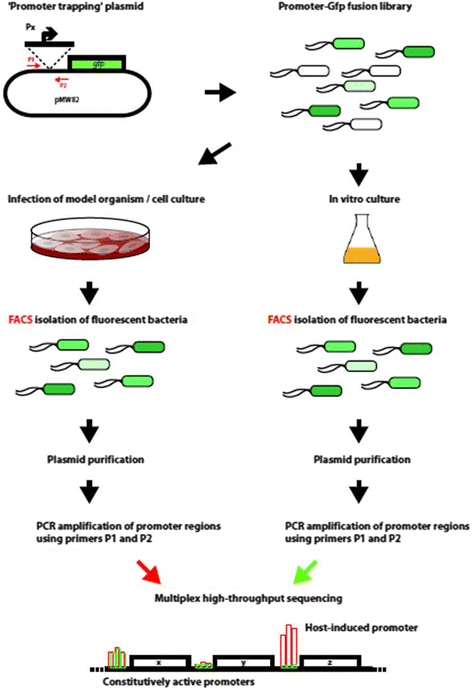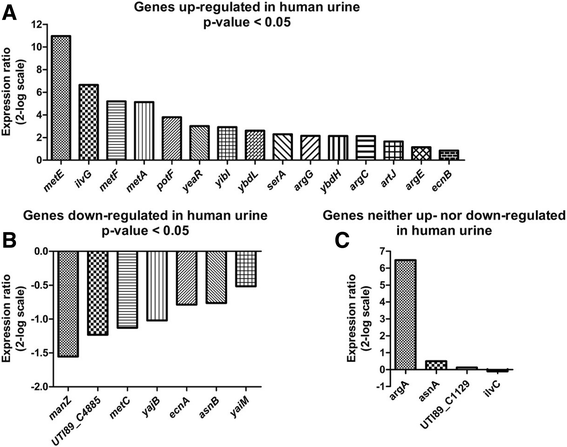DFI-seq identification of environment-specific gene expression in uropathogenic Escherichia coli
- PMID: 28438119
- PMCID: PMC5404293
- DOI: 10.1186/s12866-017-1008-4
DFI-seq identification of environment-specific gene expression in uropathogenic Escherichia coli
Abstract
Background: During infection of the urinary tract, uropathogenic Escherichia coli (UPEC) are exposed to different environments, such as human urine and the intracellular environments of bladder epithelial cells. Each environment elicits a distinct bacterial environment-specific transcriptional response. We combined differential fluorescence induction (DFI) with next-generation sequencing, collectively termed DFI-seq, to identify differentially expressed genes in UPEC strain UTI89 during growth in human urine and bladder cells.
Results: DFI-seq eliminates the need for iterative cell sorting of the bacterial library and yields a genome-wide view of gene expression. By analysing the gene expression of UPEC in human urine we found that genes involved in amino acid biosynthesis were upregulated. Deletion mutants lacking genes involved in arginine biosynthesis were outcompeted by the wild type during growth in human urine and inhibited in their ability to invade or proliferate in the J82 bladder epithelial cell line. Furthermore, DFI-seq was used to identify genes involved in invasion of J82 bladder epithelial cells. 56 genes were identified to be differentially expressed of which almost 60% encoded hypothetical proteins. One such gene UTI89_C5139, displayed increased adhesion and invasion of J82 cells when deleted from UPEC strain UTI89.
Conclusions: We demonstrate the usefulness of DFI-seq for identification of genes required for optimal growth of UPEC in human urine, as well as potential virulence genes upregulated during infection of bladder cell culture. DFI-seq holds potential for the study of bacterial gene expression in live-animal infection systems. By linking fitness genes, such as those genes involved in amino acid biosynthesis, to virulence, this study contributes to our understanding of UPEC pathophysiology.
Keywords: Amino acid biosynthesis; DFI; NGS; UPEC; UTI; Virulence.
Figures






References
Publication types
MeSH terms
Substances
LinkOut - more resources
Full Text Sources
Other Literature Sources
Molecular Biology Databases

